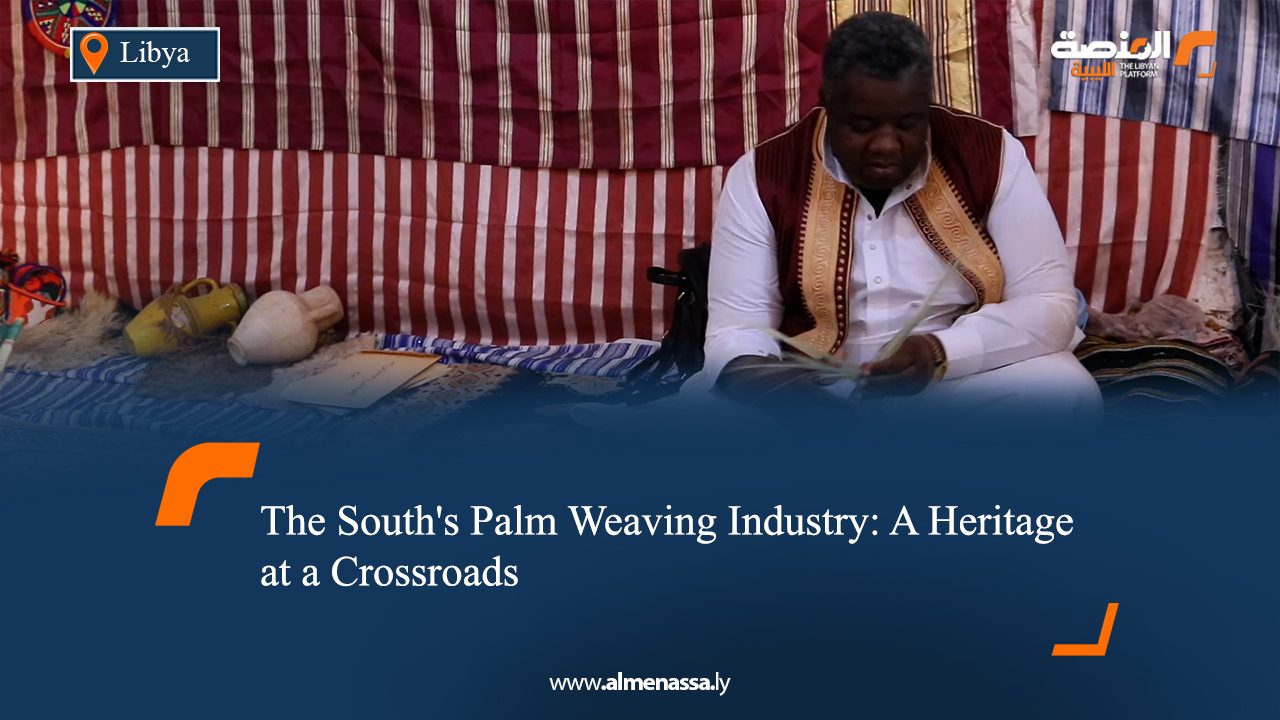Ali al-Sadiq, a man from Libya’s southern region, is dedicated to preserving the traditional craft of palm weaving, a skill passed down through generations. Despite the immense effort and hardship involved, he relies on this craft to provide for his family.
The process of this traditional trade begins with the craftsman’s regular trips to local farms to cut and select the highest quality palm fronds. The stage of cutting the “Zarib” is particularly difficult, as it requires carefully choosing, trimming, and arranging suitable fronds.
The meticulous sorting of the fronds is a time-consuming process; all pieces must be identical in quality, length, and size, and arranged in a neat stack before moving on to the drying phase, which takes about 15 days. Afterward, the dyeing stage gives the southern products their distinctive color.
Despite the declining number of people who practice this craft today, Ali al-Sadiq believes that the palm weaving industry still has a promising future, especially with the growing customer demand for traditional handmade products, which are valued for their cultural and aesthetic significance.


